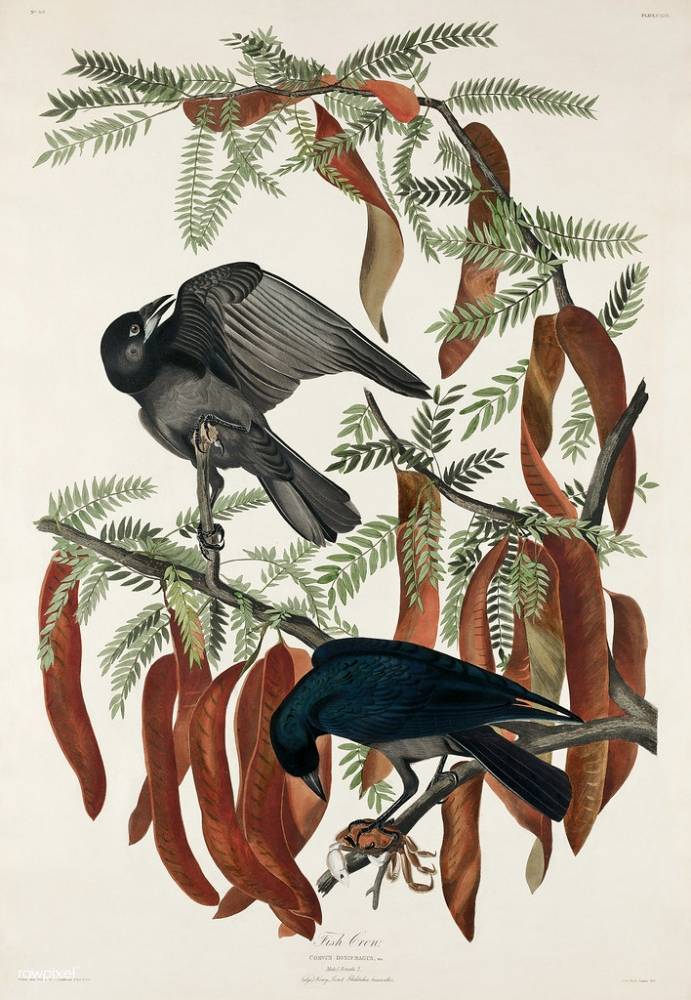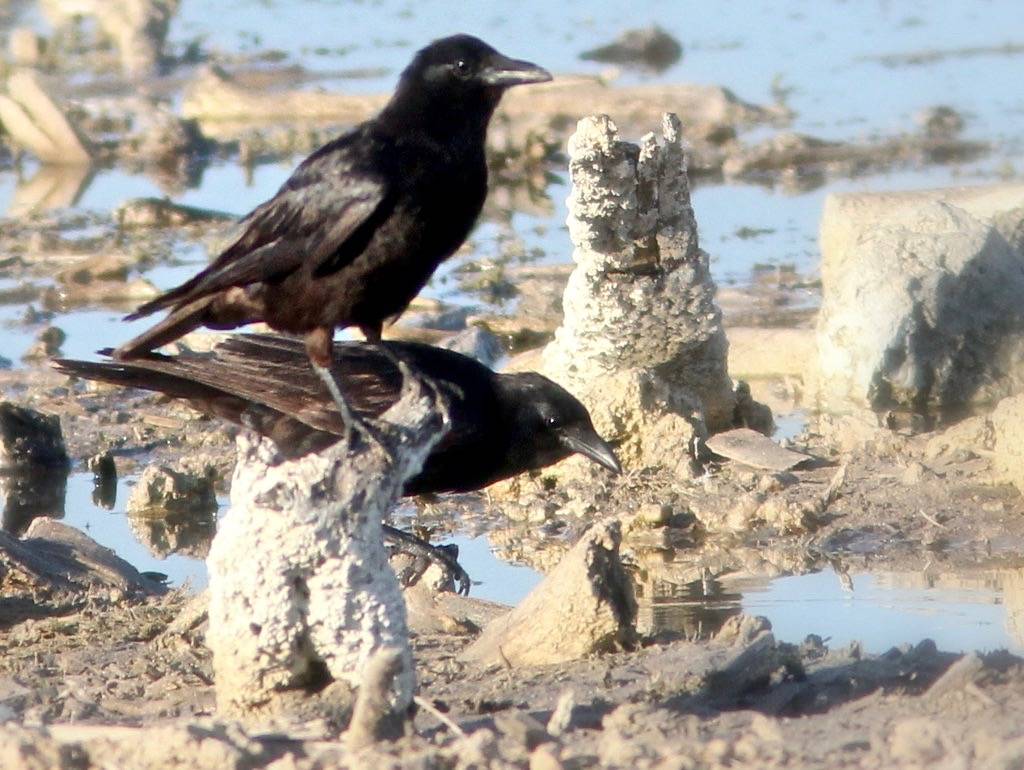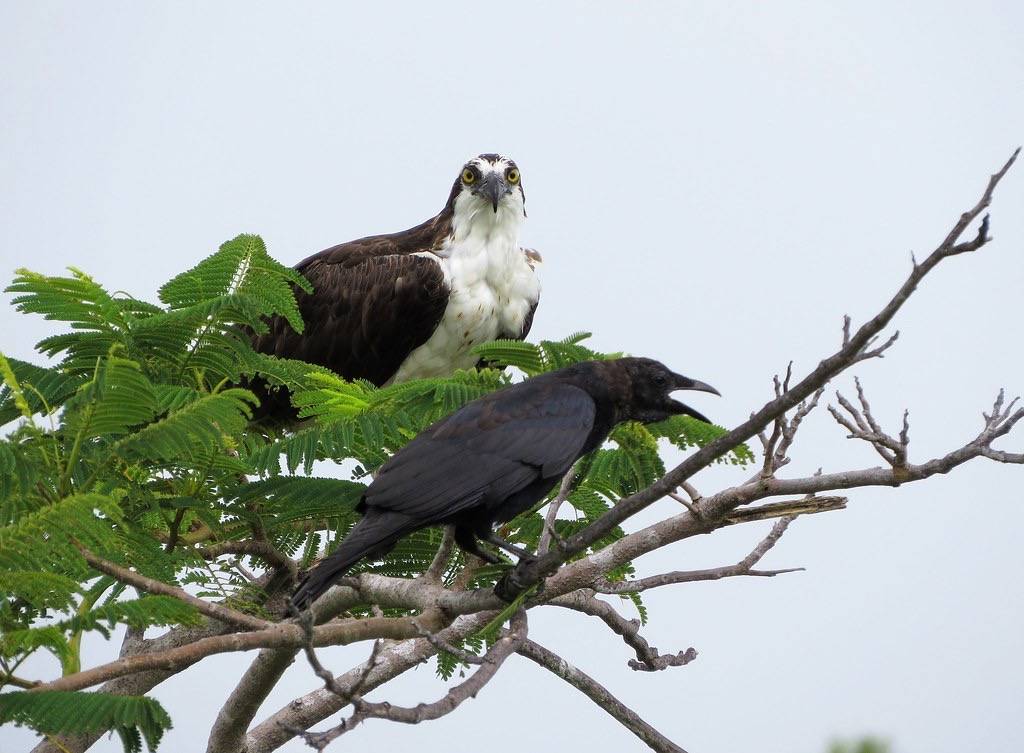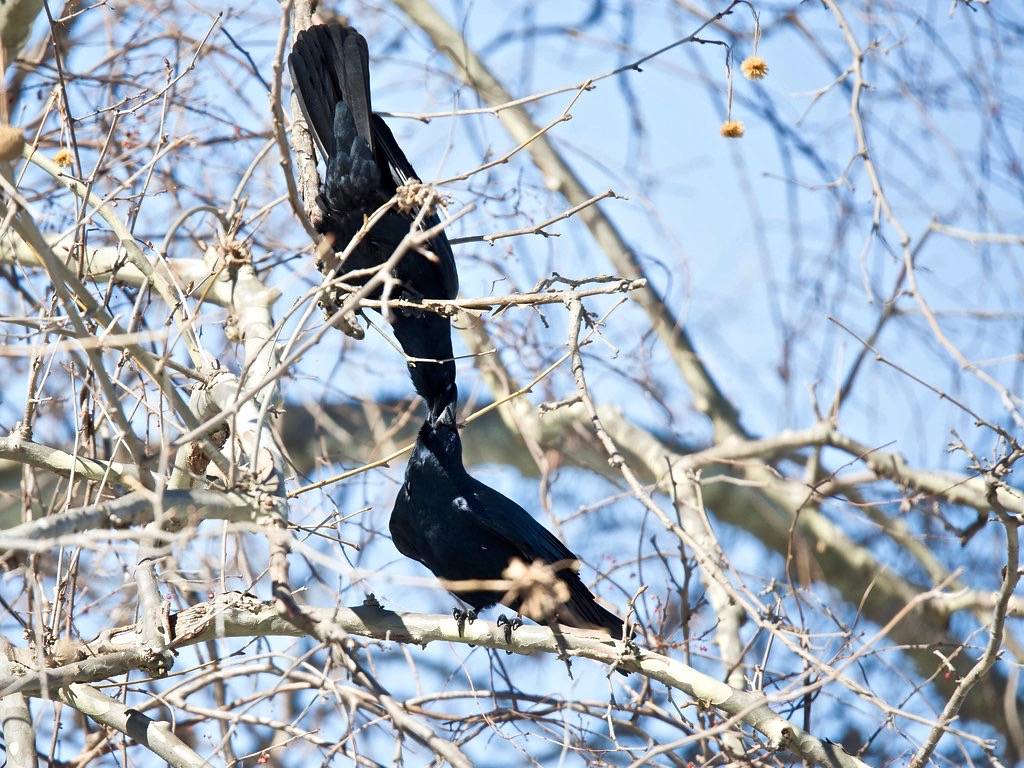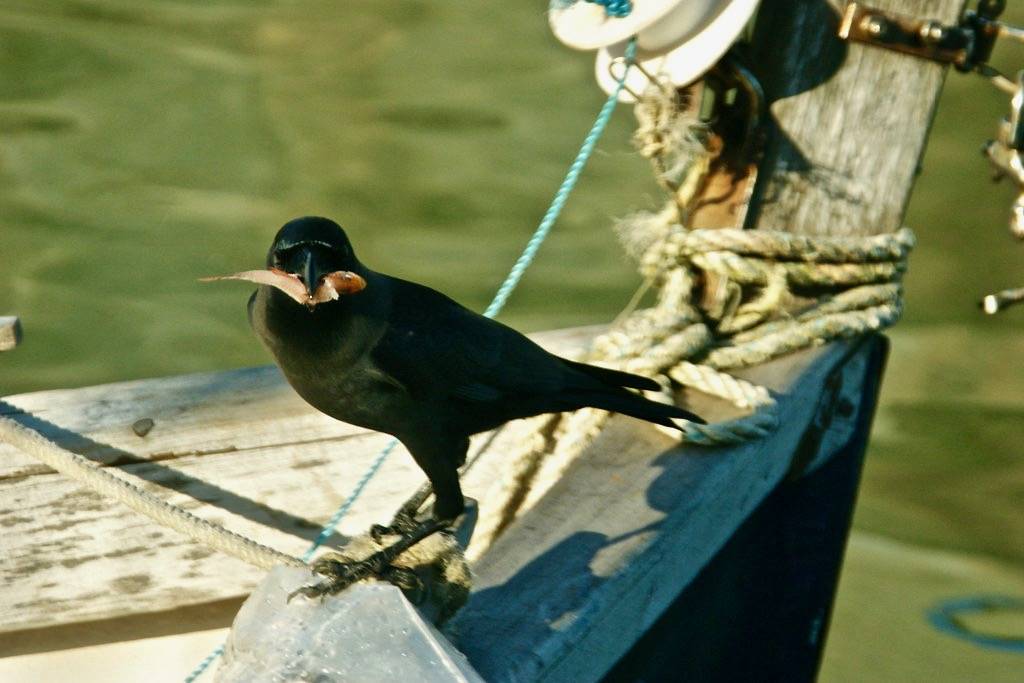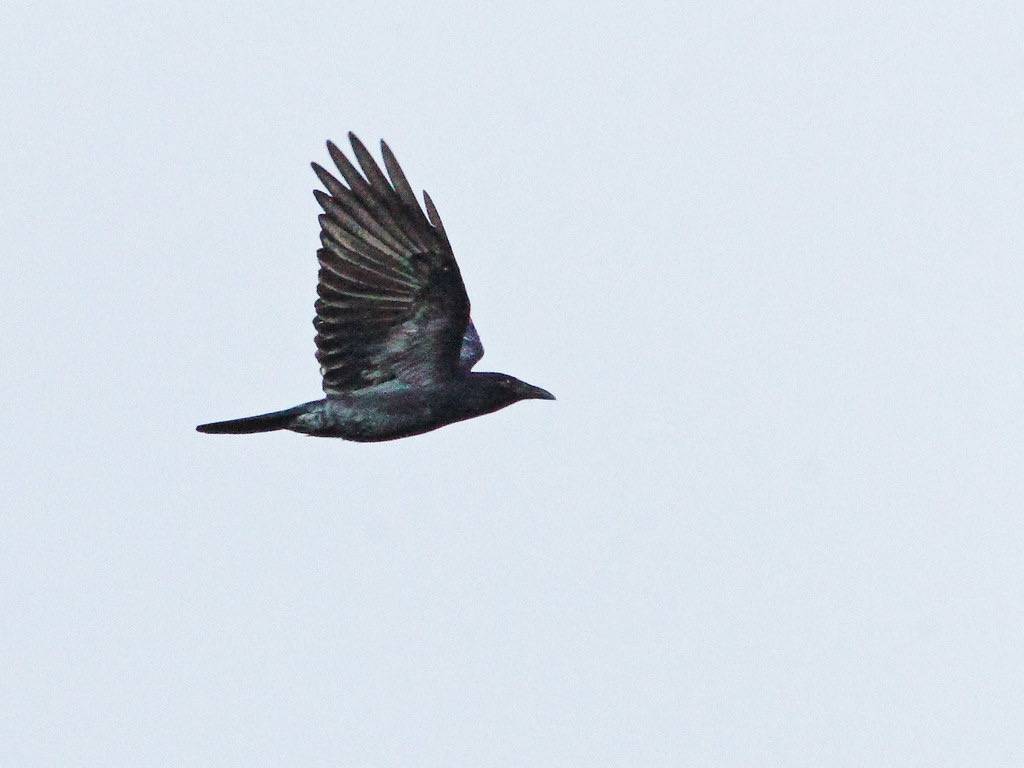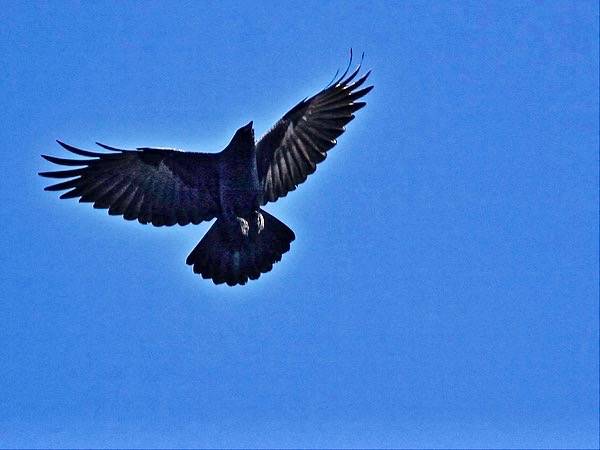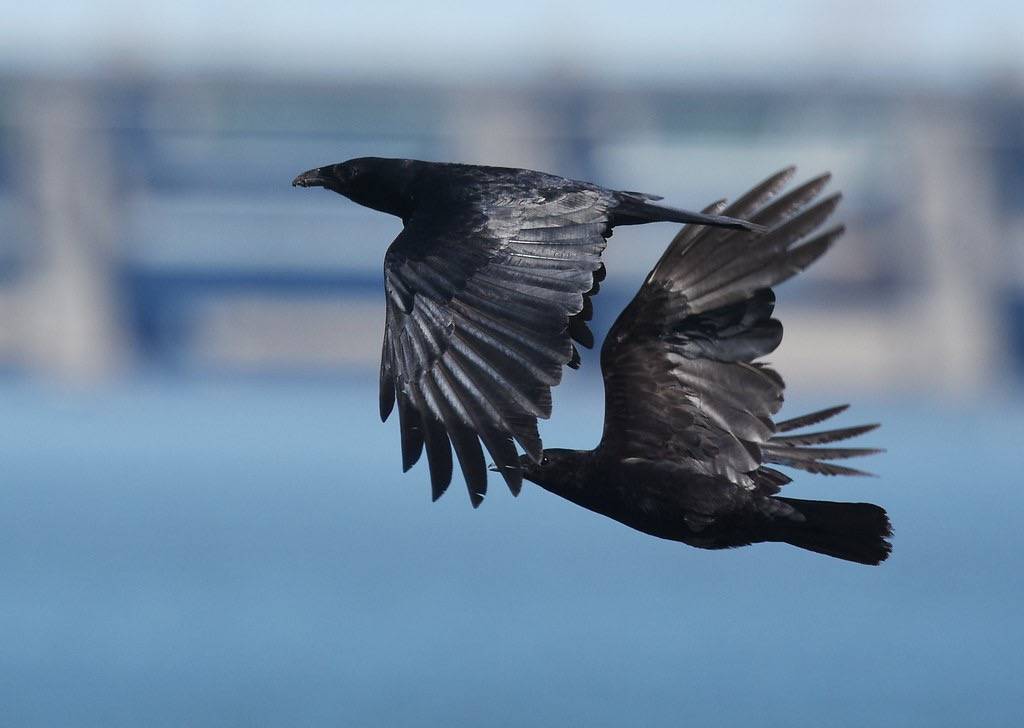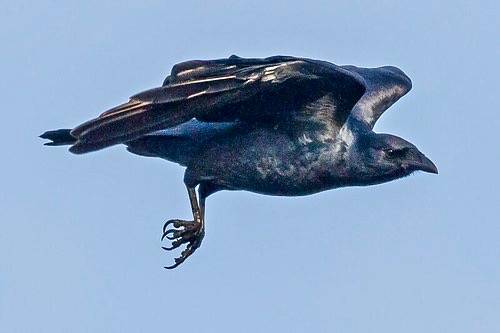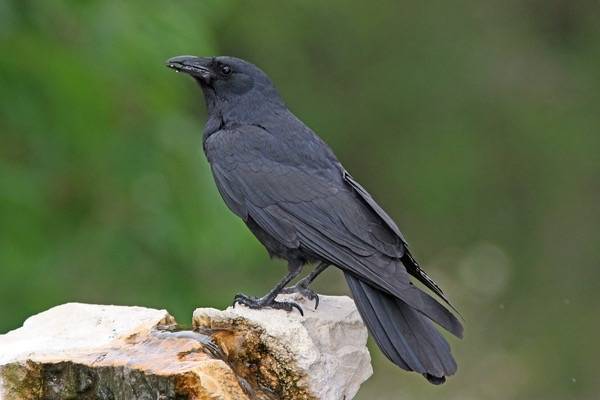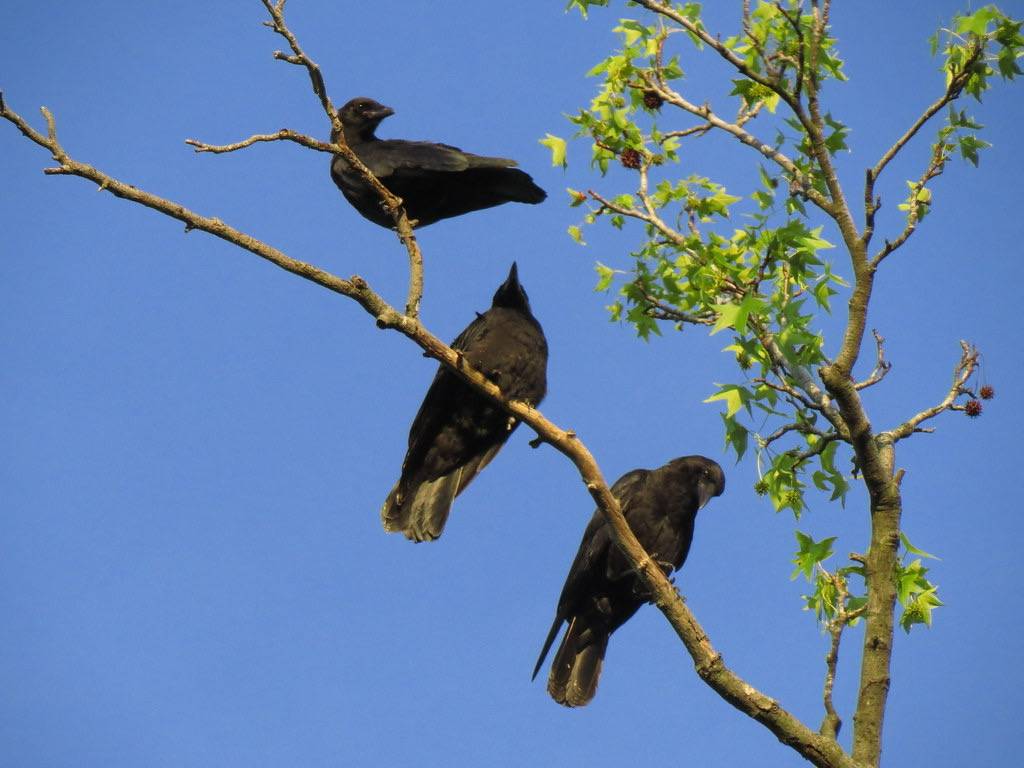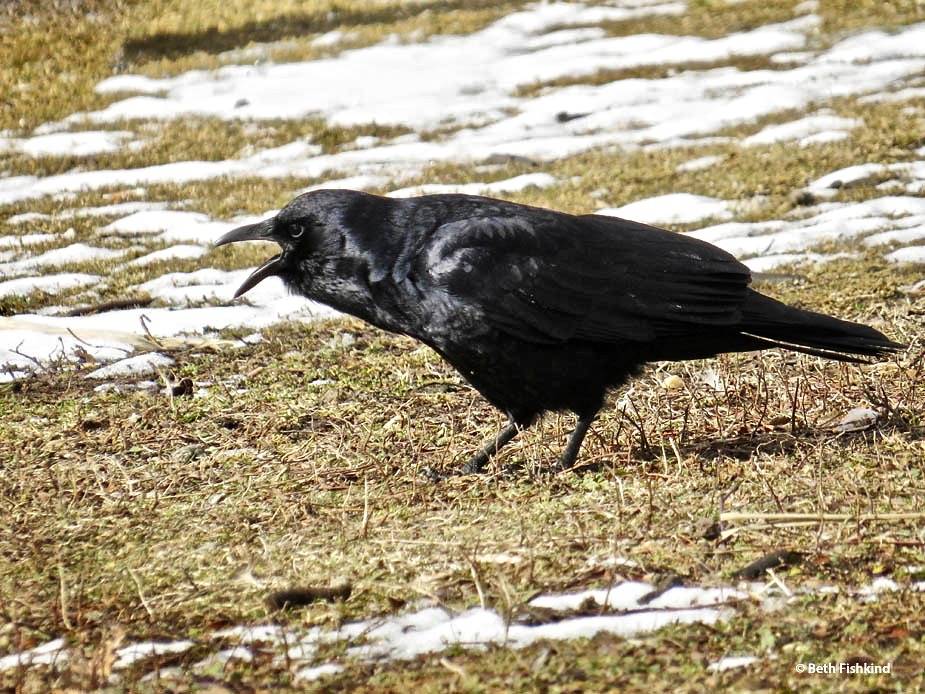Fish Crow
Fish crows have been recorded at Salter Grove in February, and from April through August. Because it is visually indistinguishable from the American Crow, and has similar habits and habitat preferences, a positive identification depends on hearing its thinner, distinctive nasally call notes "awh", "uhn", or "uh-uh." The American Crow typically makes a robust and raucous "cawww-cawww-cawww" that is more familiar to most observers.
Not only does the Fish Crow feed on fish as its name suggests, it consumes anything it can find. It is broadly omnivorous, eating berries and fruits, carrion, eggs and young of other birds, and whatever it can steal from birds feeding nearby. During low tide at Salter Grove, they forage for marine invertebrates on exposed mudflats and the seaweed-covered rocky islets of Rock Island.
Although historically more abundant on the east coast along coastlines at beaches, estuaries, and marshes, Fish Crows have been moving northward and further inland in recent decades along large rivers. They can now be heard around agricultural fields, golf courses, and wooded urban and suburban areas in the interior of the United States. They are found in large flocks at landfills during the winter months, along with American Crows. Interestingly, when a food dispute arises, Fish Crows give way to American Crows which are slightly larger.
Like other crows and jays, the Fish Crow is curious and intelligent. It will join other Fish Crows or American Crows to drive away predators such as raccoons, owls and humans. As their range expands, Fish Crow populations may cause a decline in bird species whose eggs and nestlings they prey upon.

